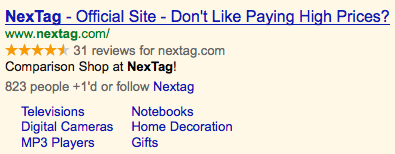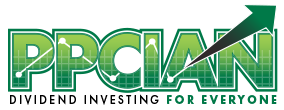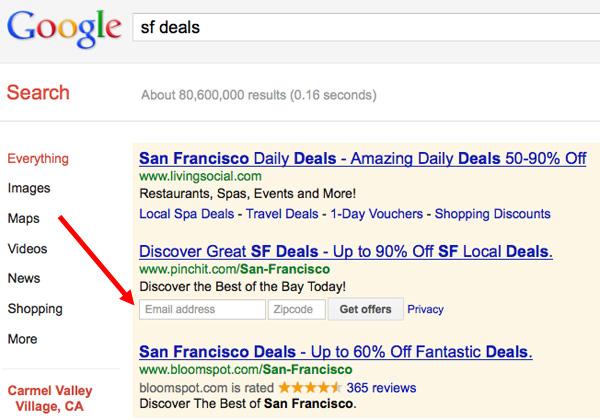A few years back, ad copy testing was all about optimizing your titles, description lines 1 and 2, and display URLs. If you were really savvy, you’d take things to the next level and write granular, custom ads for your account of tightly-themed ad groups. Today, however, ad copy testing has evolved. You still need to do all of the great stuff just mentioned, but now there’s a new dimension of complexity: ad extensions. Some of my personal favorite ad extensions: phone extensions, social extensions, and sitelinks.

Take a look at the awesome Nextag ad to the right. This ad appears when I search for their trademark, “Nextag”. I’m quite impressed to see three ad extensions showing up: sitelinks (six of them), seller/store ratings, and social extensions. The really key point here is all of the ad extensions are incremental. They do not cannibalize each other, but show up in parallel. This is what I call the “combined effect” of ad extensions and why they’re so critical to anyone’s paid search program. The more extensions you combine, the more presence you will have on the search results page. The net effect: higher click-through-rates, more traffic, and ultimately lower cost-per-clicks (since Google and Bing Ads reward those with high CTRs via lower CPCs). In 2012, ad copy testing involves all of the fundamentals but also a focus on combining multiple ad extensions for truly rich ad units.
Image © Google.com and Nextag


